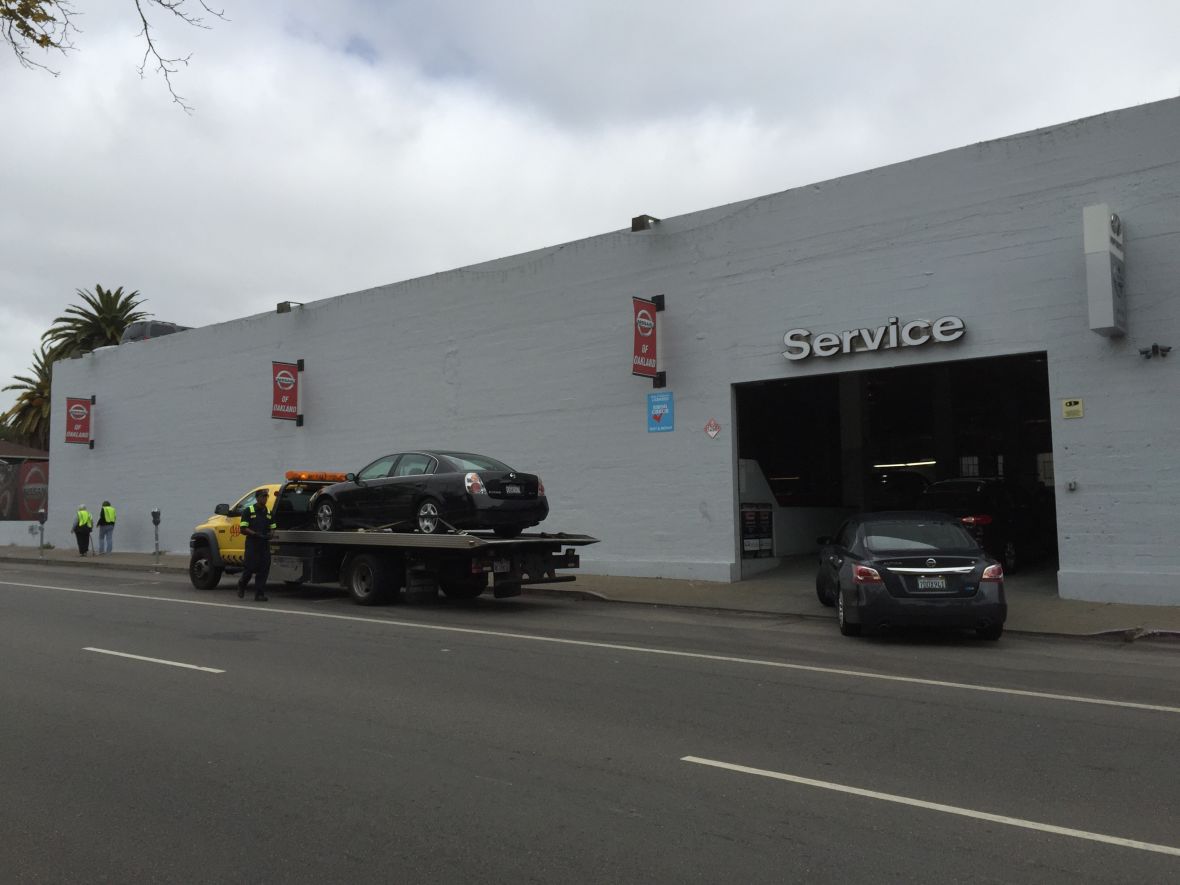Who controls the fate of a mural decades after its painted? What happens if the building’s renter completely covers it with white paint, but only after the art has been badly tagged by graffiti?
The answers to those questions may be provided by a federal court if muralist Dan Fontes has his way. Fontes is seeking $400,000 in damages from the current and former operators of Autocom Nissan at Broadway and 27th Streets in Oakland.
Fontes finished painting the mural in 1987, after receiving a $35,000 commission. It was eye-catching. Almost 90 feet long and more than 20 feet tall, the piece showed an idyllic Oakland landscape—puffy clouds in a blue sky, reflected in a blue Lake Merritt, ruffled by the wind.
“This is Dan Fontes’ baby,” said intellectual property attorney Brooke Oliver, who represents Fontes in the lawsuit. “It’s his best work. And it’s hard to imagine how anyone can look at a piece of art like that and just want to paint it out.”

Oliver argues that when the dealership painted over the mural in 2013, they violated the U.S. Visual Artist Rights Act (VARA), a law dating back to 1990. Among other things, the law requires a building owner to give an artist a 90-day notice before the mural is removed or painted over, so the artist can take back or at least document the work.
Managers at the dealership had no comment Tuesday. But Jose Perez, an officer of the dealership, wrote a letter to Oliver more than a year ago explaining why he decided to whitewash the wall.
Perez wrote that he told the landlord, the former dealership owner, and the city of Oakland of his intention to paint over the mural, and that the three failed to tell him of any legal obligation to inform Fontes of his plans. Perez also wrote that he decided to paint over the mural because it was “in bad shape… desecrated by graffiti,” with “only a fragment of the mural” still visible.
Perez also wrote that he is “saddened by the loss of the ‘Lake Merritt Mural,’ and my condolences go out to Mr. Fontes.”
But Oliver said Fontes had anticipated that the mural might get tagged, and had used special hundred year paints that would stand up to cleanings and repair.
Under VARA, Oliver says Fontes has “a strong claim for negligent conservation of the mural. When a work of fine art is tagged or damaged, the appropriate and legal duty of the building owner is to conserve it properly using a conservator. It doesn’t include just painting it over.”
VARA clearly protects artwork done after 1990, when the law was passed. Oliver recently won a $30,000 settlement and an apology from the city of Santa Cruz for artist Victor Cervantes, after the city painted over a mural he did in 1993 at a Beach Flats public park.
Fontes’ Lake Merritt mural was finished in 1987, before VARA was passed. But Oliver argues VARA protects older murals where title has never been transferred by the artist to anyone else.
“And this mural,” she said, “has never been sold.”